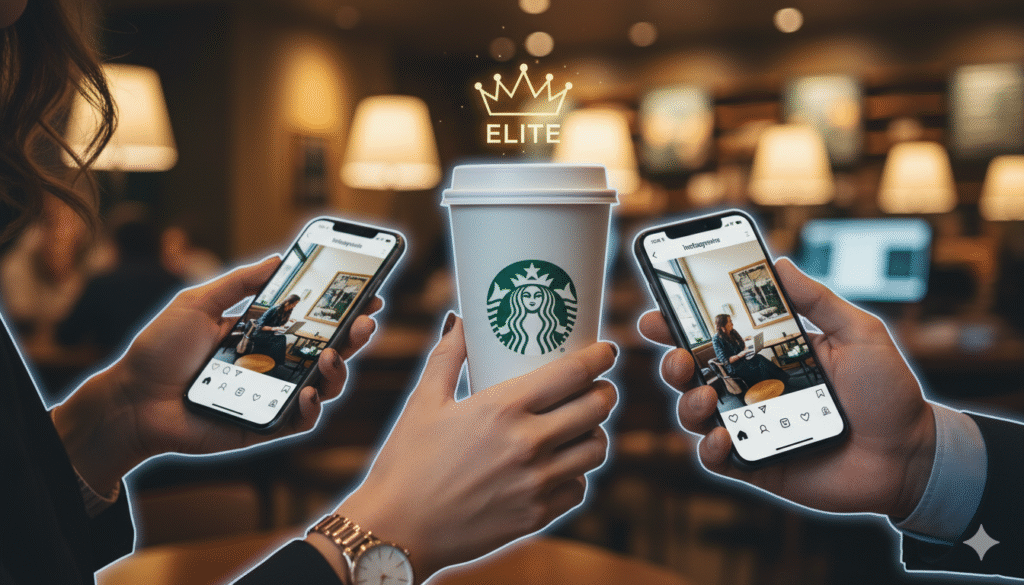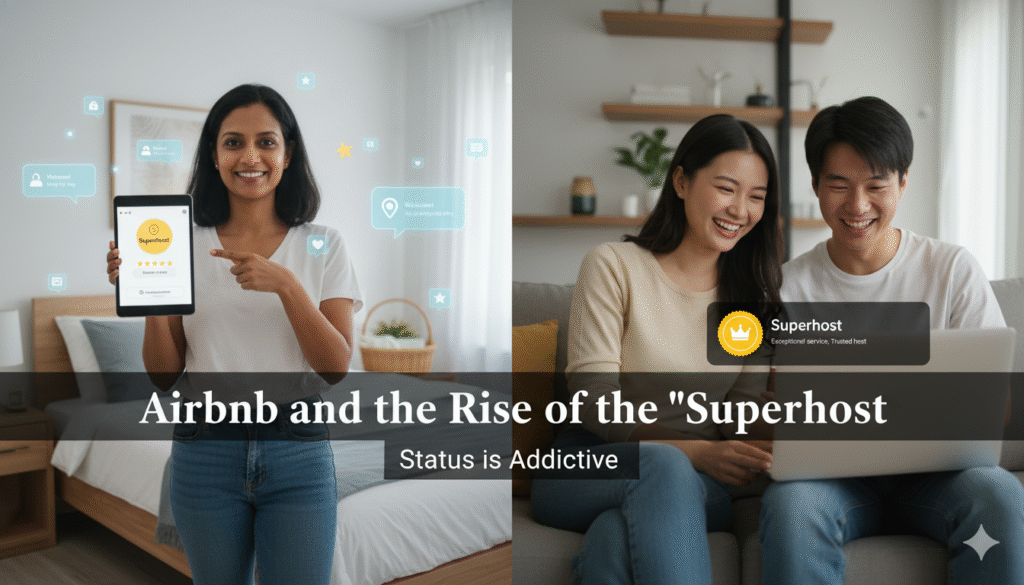Design that Sells Status: Why People Buy the Feeling, Not the Product
Introduction: Why We Care About How We’re Seen
We constantly look for ways to improve how others see us.
Not our family or close friends — they already know who we are.
But when strangers look at us, we want to appear better, more confident, more successful.
People love to feel good about themselves, and great design can help them do exactly that.
Think of it this way — people don’t always buy products.
They buy how those products make them feel.
Not our family or close friends — they already know who we are.
But when strangers look at us, we want to appear better, more confident, more successful.
People love to feel good about themselves, and great design can help them do exactly that.
Think of it this way — people don’t always buy products.
They buy how those products make them feel.
The Starbucks Phenomenon: Sipping on Status

Walk into any Starbucks, and you’ll see a mix of people — students, freelancers, executives — all holding the same cup with the green siren logo.
Many of them might not even love the coffee.
But they love what it represents: success, sophistication, a lifestyle.
Starbucks doesn’t just sell coffee.
It sells status — a momentary feeling of being part of something premium.
For some, that ₹400 latte is not a drink — it’s a 1-hour escape into a better version of themselves.
Many of them might not even love the coffee.
But they love what it represents: success, sophistication, a lifestyle.
Starbucks doesn’t just sell coffee.
It sells status — a momentary feeling of being part of something premium.
For some, that ₹400 latte is not a drink — it’s a 1-hour escape into a better version of themselves.
The Emotion Behind It: Aspiration Over Ownership
It’s not just about what you own — it’s about how it makes you feel.
People buy the sensation of belonging to a higher group, even if temporarily.
The same psychology applies across design:
People buy the sensation of belonging to a higher group, even if temporarily.
The same psychology applies across design:
- A user buys an iPhone not just for the camera — but for the feeling of being elite.
- Someone posts on Instagram not just to share — but to be seen.
- A gamer buys a limited-edition skin not for performance — but for recognition.
How Instagram Turned Status Into Currency

Instagram changed the social world with one simple metric — followers.
Suddenly, validation became visible.
The number of followers, likes, and that shiny blue tick became modern status symbols.
People even started buying fake followers — because status sells.
That little icon tells the world: “I’m someone worth noticing.”
Design did that.
A single badge changed human behavior globally.
Suddenly, validation became visible.
The number of followers, likes, and that shiny blue tick became modern status symbols.
People even started buying fake followers — because status sells.
That little icon tells the world: “I’m someone worth noticing.”
Design did that.
A single badge changed human behavior globally.
Airbnb and the Rise of the “Superhost”

Airbnb adds a similar touch of status — the Superhost badge.
Hosts who provide excellent experiences earn the title, and once they do, they work even harder to keep it.
Why?
Because status is addictive.
When people earn a visible title, they want to maintain it — and others want to achieve it too.
It’s healthy competition that pushes the entire ecosystem upward — guests get better service, and hosts get recognition.
That’s design driving motivation through status.
Hosts who provide excellent experiences earn the title, and once they do, they work even harder to keep it.
Why?
Because status is addictive.
When people earn a visible title, they want to maintain it — and others want to achieve it too.
It’s healthy competition that pushes the entire ecosystem upward — guests get better service, and hosts get recognition.
That’s design driving motivation through status.
Designing Status Responsibly
As designers, our job isn’t just to create exclusivity — it’s to make status feel achievable.
The iPhone isn’t only for the elite — it’s designed to be accessible through easy EMIs or trade-in programs.
It lets anyone, from a college student to a business owner, participate in premium design.
So when we build apps or products, we should:
Instead of “Only 1% can win,” say “Join the challenge and unlock rewards.”
It’s inclusive, inspiring, and status-driven — without being intimidating.
The iPhone isn’t only for the elite — it’s designed to be accessible through easy EMIs or trade-in programs.
It lets anyone, from a college student to a business owner, participate in premium design.
So when we build apps or products, we should:
- Encourage participation, not exclusion.
- Reward progress, not perfection.
- Create attainable milestones, not impossible elite tiers.
Instead of “Only 1% can win,” say “Join the challenge and unlock rewards.”
It’s inclusive, inspiring, and status-driven — without being intimidating.
Key Takeaways
- People don’t just buy things — they buy how those things make them feel.
- Status-driven design fuels engagement, loyalty, and aspiration.
- Badges, ranks, and visual cues tap into people’s desire to be recognized.
- Designers must balance exclusivity and accessibility — status should motivate, not divide.
Conclusion
The best designs make users feel seen, valued, and elevated.
They give people a taste of who they want to be — confident, capable, admired.
Because in the end, we’re not just designing interfaces —
We’re designing experiences that sell feelings.
And status?
That’s the most powerful feeling of all.
They give people a taste of who they want to be — confident, capable, admired.
Because in the end, we’re not just designing interfaces —
We’re designing experiences that sell feelings.
And status?
That’s the most powerful feeling of all.